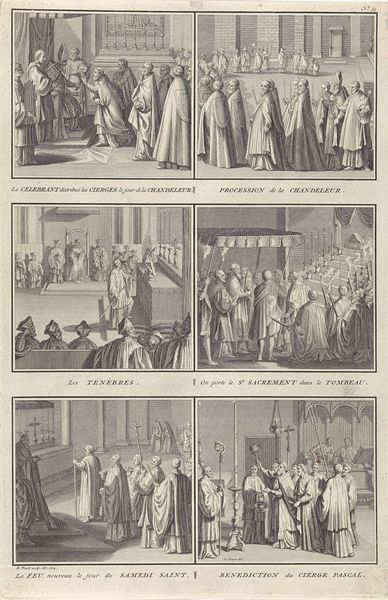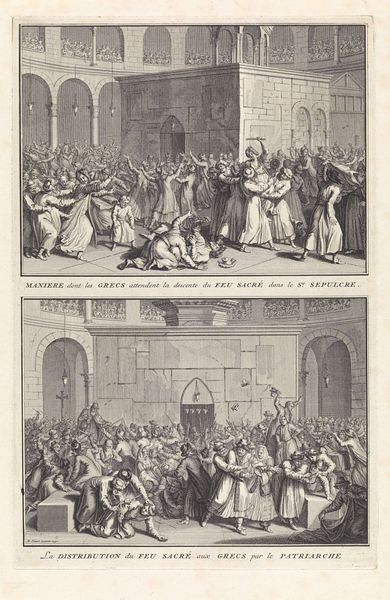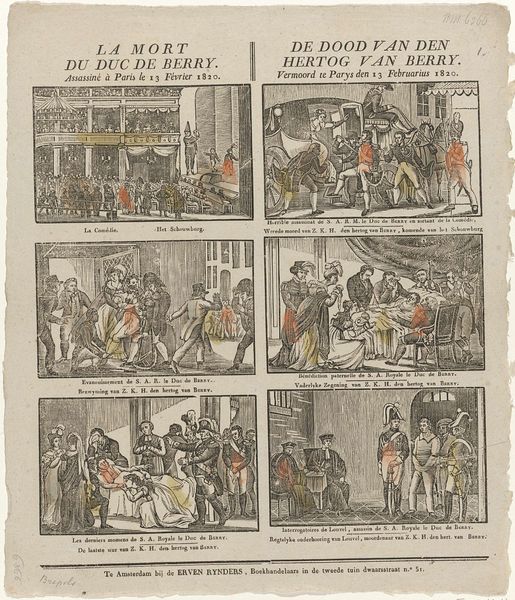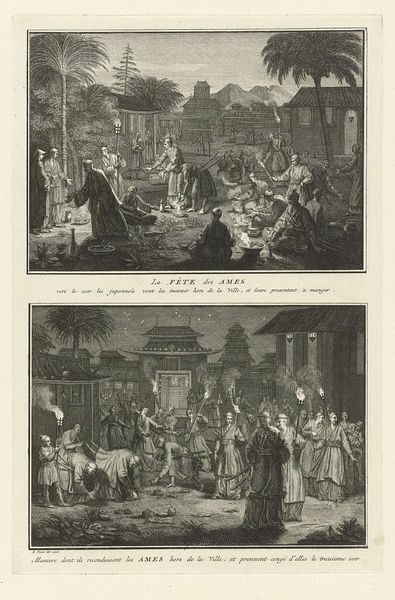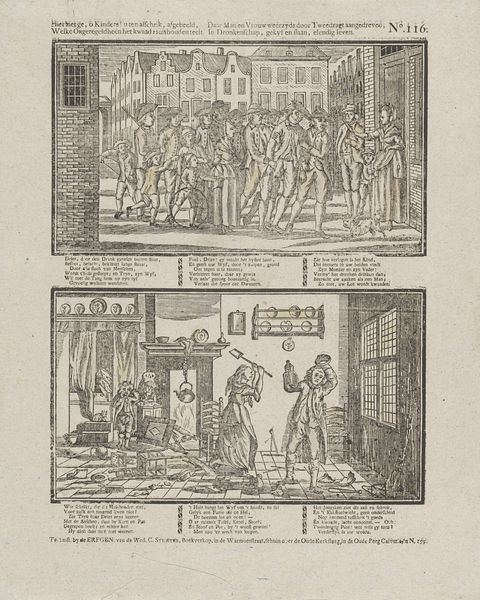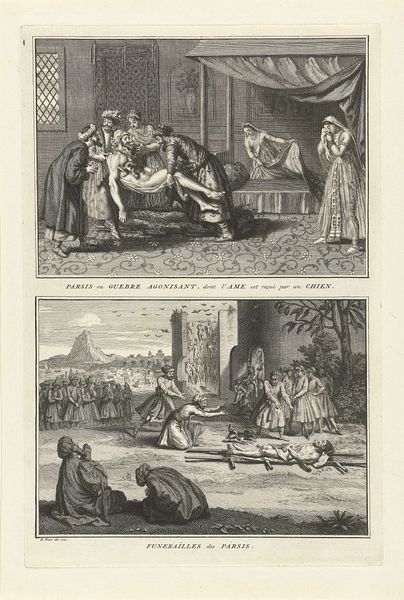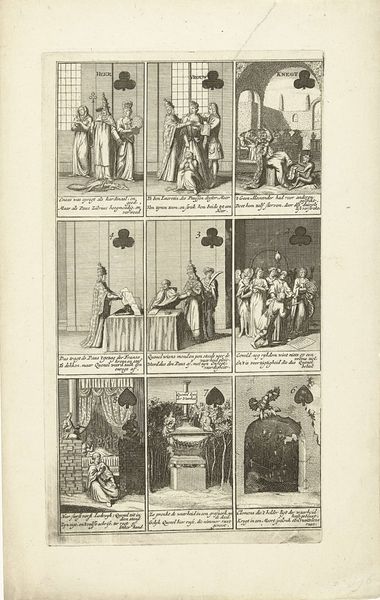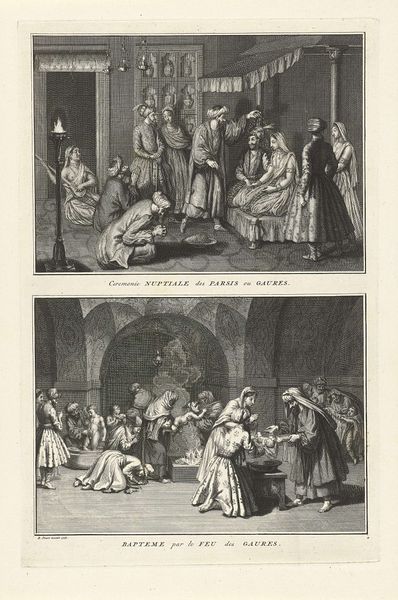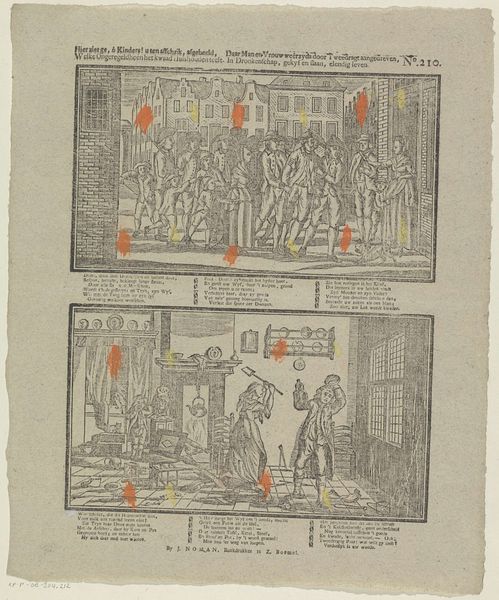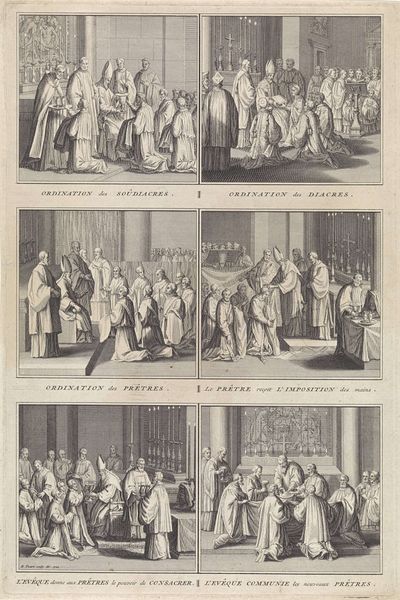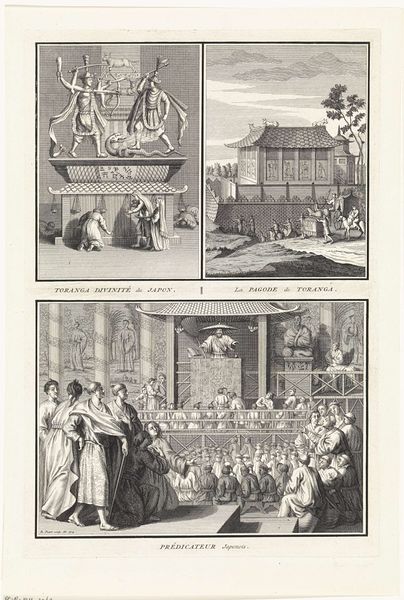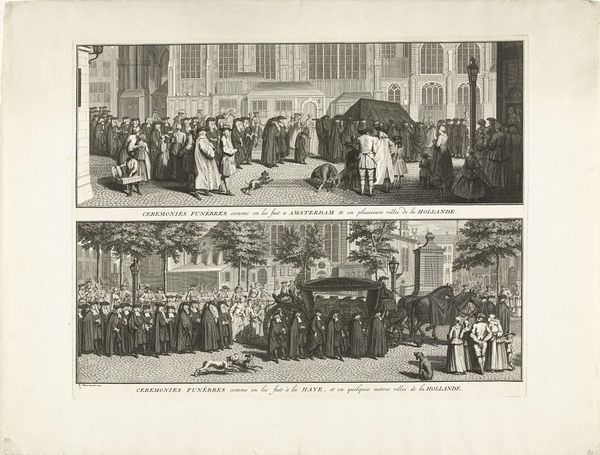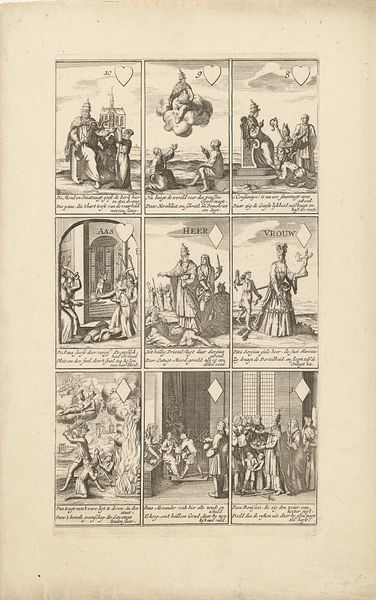
print, engraving
#
baroque
# print
#
history-painting
#
academic-art
#
engraving
Dimensions: height 335 mm, width 217 mm
Copyright: Rijks Museum: Open Domain
Editor: Here we have Bernard Picart's "Installation and Coronation of a New Pope" from 1725, a print made using engraving. I’m struck by the almost clinical way he's documented the rituals, the precision in each small scene feels very measured and detached. What stands out to you from a formal perspective? Curator: Indeed, the organizational principle here is paramount. Observe how the artist employs a compartmentalized structure, almost like a comic strip, to delineate each stage of the papal ceremony. This fragmented composition draws attention to the serial nature of ritual itself. The uniform gray tone enforced by the printmaking also diminishes any possible emotional intensity, furthering the objective feel. Do you notice anything about the figures themselves? Editor: They seem... almost identical, like they're placeholders in a grand equation. The architecture, though, has distinct forms, from the arched chapel to the more angular structures outside. Curator: Precisely! Picart masterfully manipulates light and shadow, consider the deliberate arrangement and sharp contrast which accentuates key forms in the architecture. This lends a depth and weight despite the relative simplicity of the line work. He uses repetition, yet never to the point of monotony. Consider, if you will, the way the lines both define the forms and simultaneously create a sense of overall unity across these scenes. Editor: So it's a kind of austere beauty achieved through repetition and structured arrangement? Curator: Precisely. The genius lies not in realistic depiction, but rather in the deployment of form to articulate the procedural nature and structural grandeur. The work thus achieves a symbolic gravitas despite the apparent simplicity of the printmaking. Editor: I hadn't considered the serial aspect until you mentioned it; the whole image feels less about the people and more about how different spatial arrangements and shapes build the religious procedures. Curator: Indeed, observing and interpreting form leads to appreciation. We can now comprehend its composition that invites profound contemplation on form itself!
Comments
No comments
Be the first to comment and join the conversation on the ultimate creative platform.
